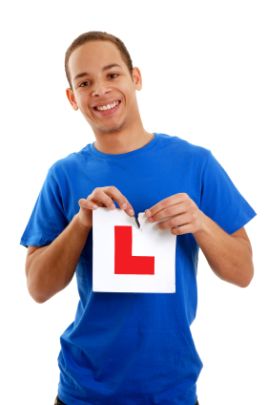Driving Theory Stopping Distances
Stopping distances refer to the distance that you car is going to travel from the time that you decide that you need to press the brake through the time that the vehicle physically stops moving.
Now there are two things that clearly influence what the stopping distance is going to be. Those two elements are your reaction time, and secondly the speed at which you are moving, which is quantified by something called the braking distance.
As you would expect, the stopping distance is increased the faster you are travelling, because there is more speed to reduce and also the further you travel during the time that it takes you to react.
Thinking in metres travelled versus a speed in miles per hour (mph) a simple table can be created that tells you what the stopping distances are for a given speed.
Stopping distances are important because you need to ensure that you drive at a speed that will allow you to stop well within the distance you can see to be clear and leave enough space in front of you to allow you to stop safely if inecessary.
This table shows you the stopping distances for speeds from 20mph up to 70mph.
| Speed |
Overall stopping distance |
| 20 mph
|
12 metres |
| 30 mph
|
23 metres |
| 40 mph
|
36 metres |
| 50 mph
|
53 metres |
| 60 mph
|
73 metres |
| 70 mph
|
96 metres |
Related Articles...
The automatic transmission explained
Whilst the automatic transmission system is very clever, you still need to have some control over it, and this is where the selector lever comes into play, which is in the place that you would have...
Medical rules and driving
There are a wide range of conditions that you can hold and still be a safe driver. However there are certain conditions that will may impact on your ability to be a safe driver and therefore could...
What to do at a roundabout
Roundabouts come in all shapes and sizes, but the basic rules that govern roundabouts are simple.
However that doesn't stop people interpreting the rules and indicating and lines in all sorts...
Nervous Driver Tips
Many people who learn to drive have a combination of nerves and excitement. Even if someone says they have no nerves and are perfectly confident when it comes to driving, the first time you get...
What signs with a percentage mean
When you are driving in some places, the roads will be up and down in terms of gradient, which refers to how the height of the road changes as you move along it, just like on a hill.
When you...
How to pass the hazard perception test
First you need to understand just what a hazard is. Broadly, it is any element that can introduce risk into the driving scenario.
There are various different types of hazard that are...
What to do if horses are on the road
It may sound quite rare, but actually on country journeys you will from time to time encounter horses and their riders using the road. And you may also come across other animals too.
When you...
What to check on your car daily
A car is a sophisticated piece of machinery, although it is commonplace and therefore taken for granted by many there are considerable elements working together to make it work.
And if one...
Selecting low gears when driving
When you are driving, you will just learn to change gears without really thinking about what you are doing and when. But generally you will change up gears the faster you are going, and this is...
Vehicles that cannot be used for a practical test
The vast majority of drivers will of course use the vehicle of their instructor or driving school when they take their practical test and so will not need to worry about the vehicle.
However...
Back to home page of driving theory test questions

